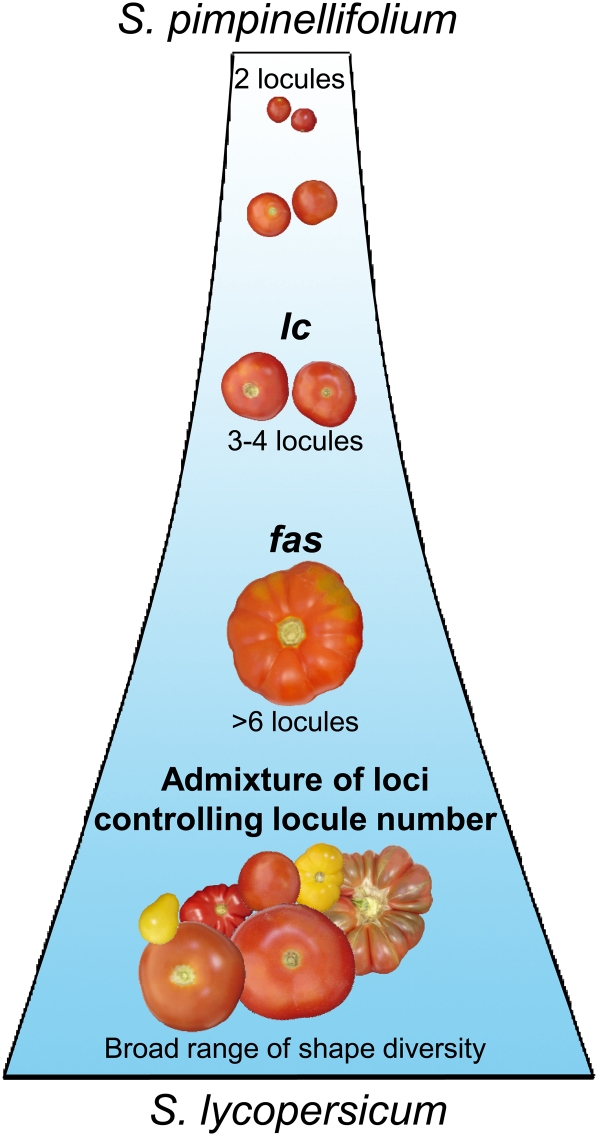Figure 6.
Model of locule number evolution in tomato fruits during domestication. S. pimpinellifolium is considered the wild ancestor of the cultivated tomato S. lycopersicum. Based on the analysis of 267 tomato accessions, we propose a model that could explain the history of locule number evolution during tomato domestication. In our study, only 4.6% of the high-locule-number accessions (i.e. those with more than three locules) had the low-locule allele of lc, and 96.9% of the fasciated accessions (i.e. those with more than six locules) had the high-locule allele of lc, but only 49.4% of them had the fas allele. These results indicate that lc was required for the increase in locule number in tomato fruits during domestication. The lc locus could have appeared before the fas locus. These two QTLs are the major loci controlling locule number. Modern breeding has used other loci to expand phenotypic diversity. [See online article for color version of this figure.]

